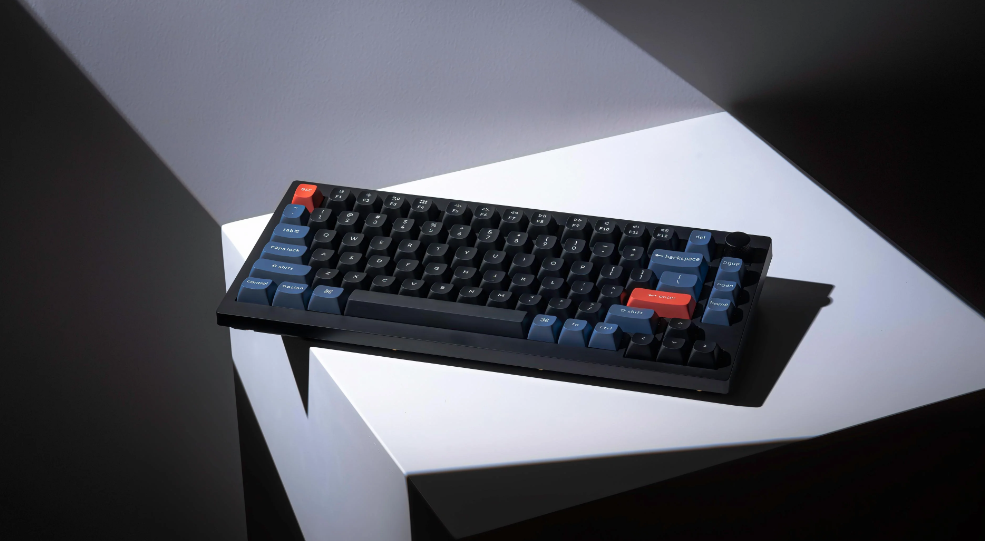Do you ever wonder how the keyboards we type on every day are made? From the click-clack of typing out messages to the smooth glide of gaming controls, mechanical keyboards offer a tactile experience that many users love. But have you ever thought about how they're manufactured? Let's take a peek behind the scenes into the fascinating world of mechanical keyboard manufacturing.
Step 1: Designing the Keyboard
Every great product starts with a great design. Mechanical keyboards are no exception. The design process involves creating a blueprint for the keyboard, including the layout of the keys, the shape of the keyboard body, and any additional features like backlighting or programmable keys.
Designers use specialized software to create digital mockups of the keyboard, allowing them to fine-tune every detail before moving on to the next step.
Step 2: Prototyping
Once the design is finalized, it's time to create a prototype. Prototyping allows manufacturers to test the design in real-world conditions and make any necessary adjustments before mass production begins.
Prototypes are typically made using 3D printing or CNC machining techniques, depending on the complexity of the design. This step may require multiple iterations as designers refine their ideas and address any issues that arise during testing.
Step 3: Material Selection
Once the design is approved, it's time to gather the necessary materials. Mechanical keyboards consist of various components, including keycaps, switches, circuit boards, and casings.
Keycaps can be made from materials like ABS (Acrylonitrile Butadiene Styrene) or PBT (Polybutylene Terephthalate), each offering different textures and durability. Switches are typically made from plastic and metal components, with variations in spring resistance and actuation force. ABS is smooth and shiny, while PBT is rougher and more durable.
Switches are what makes each key work. There are different types of switches, some need more force to press, and some are quieter or louder.
The circuit board is like the brain of the keyboard. It connects all the keys to the computer. It's made by printing tiny wires onto a board, usually made of fiberglass or epoxy.
Lastly, the casing is the outer shell of the keyboard. It's what holds all the parts together and gives the keyboard its shape and look. The casing can be made from plastic, metal, or other materials, depending on the design and durability needed.

Step 4: Switch Assembly
The fundamental aspect of a mechanical keyboard lies within its switches, which determine the tactile feel and auditory output of keystrokes. Switch assembly involves precision engineering to ensure consistent performance across all keys.
First, the different parts of the switch are brought together. These parts include things like the housing (which holds everything in place), the stem (the part that moves up and down when you press the key), and the spring (which helps the key bounce back up after you press it).
Assembly begins with placing the housing onto a specialized fixture or holder, ensuring it's positioned correctly. Then, the stem is carefully inserted into the housing, fitting snugly into place. Next, the spring is added, providing the necessary tension for the key to return to its original position after being pressed.
Once all the parts are in place, the switch is sealed together, often with the aid of machinery or precise hand assembly techniques. This ensures that the components remain securely in position during use, preventing any unwanted wobbling or instability.

Step 5: Circuit Board Production
The circuit board, or PCB (Printed Circuit Board), serves as the backbone of the keyboard, connecting the switches to the computer. PCB production involves etching copper traces onto a substrate material, typically fiberglass or epoxy.
Specialized machines are used to print the circuit layout onto the substrate, followed by a process of etching to remove excess copper and leave behind the desired traces. Components such as diodes, resistors, and LEDs are then soldered onto the PCB.
First, we start with a flat board made of a special material like fiberglass or epoxy. Then, we use machines to draw lines on this board, like drawing roads on a map. These lines are made of copper, a metal that conducts electricity. These lines will guide the electricity to where it needs to go.
Next, we use a special liquid to wash away the copper where we don't need it, leaving behind the copper lines we drew. This process is a bit like using an eraser to remove pencil marks.
Once the lines are done, we add small parts like diodes, resistors, and LEDs onto the board. These parts help control the flow of electricity and make the keyboard work properly.
Finally, we check everything to make sure it's all connected right. This step is like double-checking our map to ensure all the roads lead to the right places. When everything looks good, our circuit board is ready to bring our keyboard to life!
Step 6: Assembly and Testing
With all the components ready, it's time for assembly. Skilled workers carefully install the switches onto the PCB, ensuring each one is aligned correctly. Keycaps are then placed onto the switches, completing the keyboard's physical layout.
Once assembled, the keyboards undergo extensive testing to ensure functionality and durability. Each key is pressed multiple times to check for proper actuation, and the keyboards may undergo stress tests to simulate prolonged use.

Step 7: Quality Assurance and Packaging
Before shipping out to customers, the keyboards undergo a final round of quality assurance. This may involve visual inspections, functional testing, and packaging checks to ensure everything meets the manufacturer's standards.
Once approved, the keyboards are carefully packaged, often with accessories such as keycap pullers and instruction manuals. Protective packaging materials are used to safeguard the keyboards during transit, ensuring they arrive in pristine condition.
Conclusion
The journey of making a mechanical keyboard is a fascinating blend of art and engineering. From the initial design concepts to the final assembly, each step requires precision and attention to detail. Whether you're a typist, programmer, or gamer, the craftsmanship behind mechanical keyboards adds a special touch to your typing experience, making each keystroke a delight.
Elevate your typing experience with Keychron, a premier provider of top-tier mechanical keyboards for Mac, Windows, iPhone, and Android. Explore the acclaimed Keychron K6, Keychron K8, Keychron K2, and Keychron V6 models, each crafted for optimal performance and compatibility. Upgrade your setup with Keychron's unbeatable quality and versatility.
FAQs (Frequently Asked Questions) About Mechanical Keyboard Manufacturing
1. Are all mechanical keyboards made using the same process?
Ans- While the basic manufacturing steps are similar, there can be variations in materials, assembly techniques, and quality control processes depending on the manufacturer and the specific design of the keyboard.
2. What materials are commonly used in the manufacturing of mechanical keyboards?
Ans- Manufacturers typically use high-quality plastics for the keyboard housing, keycaps, and switch housings. Metal alloys such as aluminum are also common for keyboard frames and backplates.
3. Can I customize my mechanical keyboard during the manufacturing process?
Ans- Some manufacturers offer customization options such as choosing different switch types, keycap materials, and keyboard layouts. However, these options may come with additional costs and longer lead times.

